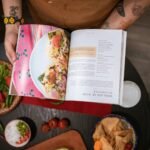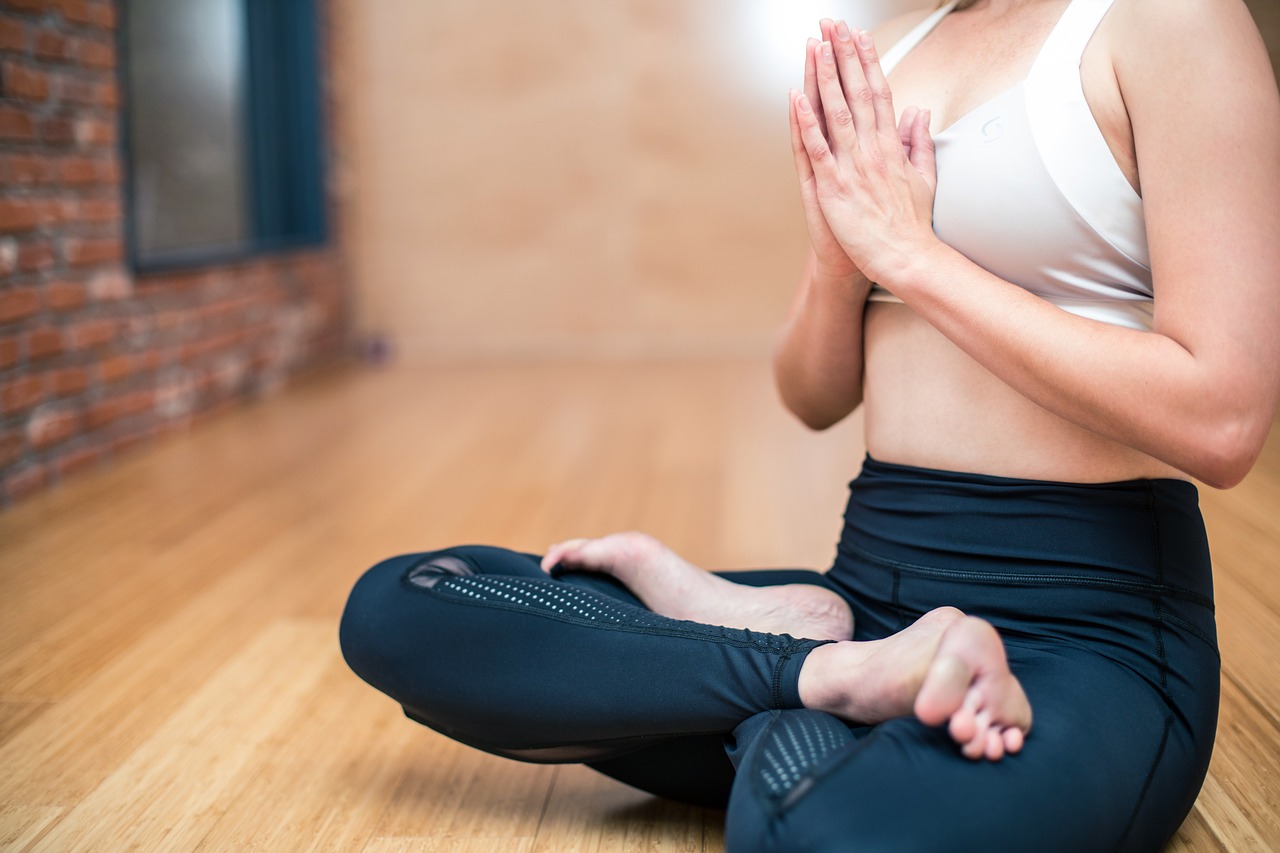OPEN DAILY 1pm to 10pm Find Us: 729 Montana Ave STE 2 Santa Monica CA 90403.
Mats, Mix-ins, and Spirituality: Chatting with a Plant-Based Chef & Yoga Maven Nina Hayes
What happens when you mix a love for health, wellness, plant-based cookies, and yoga? Well, I’ll tell you – you get Nina Hayes. One of the best things about running a plant-based ice cream business is all the amazing people we get to meet and Nina is certainly one of them. Since we started collaborating on flavors Nina has been someone we have really wanted to work with.

Banana PB Cup Swirl
In May 2024 we collaborated to create a Banoffee PB Cup Swirl which we offered for a limited time at our Montana Ave store. First, some housekeeping, “Banoffee” is not a mixture of Banana and Coffee. It is a delicious dessert banana-based dessert combining banana, whipped cream, and caramel (usually on a pie crust).
To give Bananoffee Pie the FFC treatment we worked hard with Nina to create something that could surpass this classic dessert and stand on its own as a delicious plant-based ice cream. The result was a combination of a banana pudding ice cream base (made from coconut cream, fresh bananas, and sweetened with organic date) then topped off with chunks of chopped-up house-made peanut butter cups, and finally finished with a salted maple caramel. Plant-based and sweetened with only organic date and in the maple caramel (organic coconut sugar, and organic maple syrup). This flavor was the perfect combination.
Join us as we delve into a conversation with Nina on what makes her tick, her favorite plant-based foods, her personal recommendations for moving into a more plant-based lifestyle, and of course, what’s her favorite ice cream flavor.
On a personal note, I am a big fan of Nina so being able to work with her and talk to her about the topics was a pure pleasure.

Tell everyone a bit about you.
I am a plant-based chef, yoga teacher, and health and wellness facilitator. My greatest joy lies in transforming what might seem ordinary, like a simple meal, into a magical experience. I also find fulfillment in using the body (through dance and yoga) to transmute challenging emotions into focused energy, which can then uplift both ourselves and others. Sharing these transformative tools and experiences brings me immeasurable delight.
Through initiatives like the “Enlightened Supper Club” – a spiritually grounded community dinner event, leading international wellness retreats, and offering private chef and yoga instruction sessions, I spread these practices. Additionally, I freelance as a copywriter, specializing in all things related to health and wellness.
The world is teeming with spiritual mysteries, a spectrum of emotions, and profound human experiences. I feel compelled to view all of these as opportunities for deeper understanding. For me, comprehension comes through tasting and gracefully navigating the whirlwind we call life.
What are 5 things people don’t know about you?
- My favorite novel is “Anna Karenina” so naturally, I named my miniature Mexican Hairless pup, Tolstoy who is a pescatarian.
- I founded a nonprofit, Blossom Ostomy, to educate and empower individuals with ostomies (a life-saving surgical procedure for those with severe digestive disease).
- I went to Mexico during the pandemic to visit for one month and ended up living there for three years.
- I’m classically trained in ballet, but performed as a hip-hop dancer for over a decade and I still dance for fun.
- I recently traveled to Singapore and can’t stop singing its praises; I think it’s fantastic that littering, and being noisy in public are finable offenses.
How and why did you get into plant-based food?
I stopped eating meat when I was in my teens, primarily because, as a dancer, I was interested in eating healthfully. Although I cared for animals and felt uncomfortable with the idea of humans eating them, I continued to eat fish for many years, largely due to my obsession with spicy salmon rolls and sushi in general.
I remember precisely when I shifted to a vegan diet. It was 2009 in Sydney, Australia, and I was in the midst of an intensive yoga teacher training. One evening, I ordered Salmon curry at a Thai restaurant, but when I picked up my fork to eat, I suddenly felt physically weak, and a palpable sense of unease washed over me—an unusual cellular experience I had never felt before. Despite my hunger, I explained to the server that while nothing was wrong with the fish curry, I had changed my mind and wanted to order the tofu curry. They might have thought I was a bit odd, but they obliged and brought the tofu curry.
As soon as it arrived, the odd feeling of weakness disappeared, and I fully enjoyed my delicious meal. The following night, I had a similar experience. I ordered sushi, but again, when I tried to eat it, my arms felt weak, and I had to reorder something vegetarian.
This time, I understood the message my body was sending. Perhaps due to the intensity of my yoga, meditation, and spiritual practices, I could no longer ignore the discomfort of unconsciously eating another animal.

What is your favorite plant-based recipe to make?
That’s like asking a mom with a large brood to choose her favorite child. I’d have to go with my Yokohama-inspired tofu and cauliflower curry. Most people are familiar with Thai and Indian curries, which I love, but there is something about a Japanese curry that satisfies the palate unlike any other.
It’s simultaneously sweet, umami, and piquant, and as a roux-based curry, it’s thicker and creamier than other Asian curries. I use coconut milk and mirin in mine along with a laundry list of secret ingredients. When I do pop-up dining events, I inspect the dishes to determine which dishes are most loved, and the curry bowls always come back as if they were licked clean so I know others like this as much as I do.
Can you share some insights into how becoming a plant-based vegan chef has influenced my lifestyle?
Being a plant-based chef has become a profound outlet for my creativity. I find myself dreaming of flavor combinations, plating ideas, and preparation techniques, and bringing them to life is essential for my sense of fulfillment. I’m deeply grateful for my clients, as they not only provide the means for me to manifest these culinary dreams but also offer valuable feedback. Without diners to appreciate and enjoy my creations, the role of the chef would lose its essence.
Transitioning into the realm of plant-based cuisine has also enabled me to step away from vegan advocacy, a path I pursued earlier in life. While I hold organizations like PETA in high regard for their commendable work, I’ve come to realize that dictating food choices by appealing to a standard of “right” and “wrong” doesn’t resonate with me. I believe that each person’s dietary preferences are shaped by their unique life experiences, and I aim to honor this diversity.
As a chef, I prefer to demonstrate rather than preach. If I can craft dishes that captivate people’s taste buds and happen to be plant-based, I feel I’ve made a meaningful contribution to fostering a more compassionate world. My goal is to invite others into the realm of plant-based eating through the pleasure of their senses, rather than through intellectual persuasion.
How can beginners integrate plant-based vegan cooking into their daily lives?
Start by considering the plant-based elements already present in your diet. You might be surprised to discover that many of your regular meals are predominantly plant-based without necessarily being labeled as “vegan.” With a few simple adjustments, these meals can easily become entirely plant-based.
Take, for instance, a classic bowl of oatmeal. By substituting almond milk for cow’s milk in its preparation, you effortlessly transform it into a vegan dish. Similarly, dishes like chili can be made plant-based by omitting the meat and increasing the quantity of beans. As a fun alternative, try swapping beans for raw cashews; you might be pleasantly surprised by the result.
Exploring cuisines from around the world also unveils a wealth of naturally plant-based options. Middle Eastern cuisine, for example, offers an array of delightful dishes. You can easily assemble a Meze spread featuring vegetarian stuffed grape leaves, hummus, baba ganoush, pita bread, and a marinated vegetable salad.
For beginners, I recommend steering clear of highly processed foods marketed specifically to vegans. While they may align with ethical principles, they often lack nutritional value, come with a hefty price tag, and can taste artificial. Instead, focus on whole, minimally processed plant foods for optimal health and satisfaction.
Remember, even small steps toward eating more plant-based food deserve acknowledgment. Whether it’s swapping meat for plants a few times a week or embracing fully plant-based meals, every effort counts. And feel free to discard the labels like “vegan” if they don’t resonate with you. Eating should be a source of nourishment, both physically and spiritually, devoid of divisiveness or competition. Prioritize what feels right for you and aligns with your well-being.
How do you stay energized and fueled throughout your day-what are your favorite things to eat and cook?
I kickstart my mornings with a cold-brew latte crafted from freshly pressed coconut milk, raw honey, and a blend of adaptogenic herbs and powdered medicinal mushrooms. The healthy fats from the coconut effectively balance out the caffeine, ensuring I remain energized without experiencing any jitters or subsequent crashes. In my view, when consumed mindfully, caffeine can indeed be a beneficial component of one’s diet.
As for snacking, I tend to keep it light during the afternoons. Multiple green juices and pureed vegetable soups often grace my palate, reflecting my preference for nourishing, refreshing options. Each day brings a unique rhythm, and I make it a point to listen attentively to my body’s cues to discern its needs.
My true culinary passion lies in crafting elaborate main meals, particularly dinners featuring multiple courses. This provides me with the perfect opportunity to experiment with recipe concepts for clients and events alike. Picture a meal like this: a soothing kelp-based broth served with simmered yuba (tofu skin) as a starter, followed by a vibrant rice noodle and vegetable stir-fry as the main course, accompanied by a medley of braised root vegetables drizzled with a luscious tahini sauce on the side.
And when it comes to dessert, Frozen Fruit Co., as a healthy treat to complete any meal.
What are 5 ingredients you can’t live without?
- Mirin (a sweet Japanese rice wine used in cooking)
- Coconut oil
- Liquid Aminos (classic “Braggs”, of course)
- Coconut Milk
- Tofu (I prefer fresh, organic silken, but depending on the texture and flavor I’m seeking, I employ many varieties of tofu preparations…God is in the details!
What’s your favorite flavor of plant-based ice cream from Frozen Fruit Co.?
Vanilla Peanut Butter Salted Caramel, the Friday Special.

Where can people find you online and get in contact with you?
For the most direct communication, reach out via email at ninitahayes@gmail.com or find me on Instagram @ninahayesmission. Additionally, curious individuals can explore further on my website: ninahayesmission.com.
As a special treat for Frozen Fruit Co. customers, I’m extending a generous 20% discount on most services. Just mention Frozen Fruit Co. in your direct message or email. Currently, I’m excited to present the “Spring into Summer” pantry makeover, designed to facilitate a seamless transition toward a healthier diet. During this service, I meticulously clean and organize cupboards and refrigerators, replenishing them with wholesome essentials. It’s a comprehensive approach to ensure my clients are fully equipped for success on their wellness journey!



